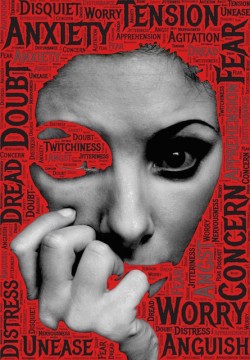
Warning: This post deals with attempted suicide and may be distressing for some readers.
~
I was 23 years old, newly married and unbeknownst to anyone, 10 weeks pregnant.
At this vulnerable time in my life I was deep into an internship at Weskoppies Psychiatric Hospital, located in Pretoria, South Africa. Being at Weskoppies was an eye-opening experience for me. It’s hard to describe in words the people I encountered and the extreme experiences I had there.
On my first day, I went to the communal canteen for lunch and sat next to both Elvis Presley and Madonna. These were not look-alikes or people who dressed up so we could take photos. These were people who simply knew, beyond any shadow of a doubt, that they were Elvis and Madonna. That was only one day of a fascinating year.
I came home one night and was settling into an evening at home. It was about 6 p.m. when I got a call from an acquaintance in the community. She must have known I was studying psychology. She was screaming and crying into the phone, “Lynne, please come and help me, please come now.”
Young, ignorant and full of confidence that I could help, I jumped into my car and drove over to this young woman’s house. She was living alone with her baby. I walked in (front door open) to find her sitting in a chair. She was white as a ghost, in a catatonic (immobile) state staring straight ahead. She had a butcher’s knife in her left hand and blood pooled from her wrists to the floor.
I went into shock, but somehow managed to go up to her to see if she was okay, vaguely worried that she might stab me, too. I managed to get help for her. She was okay and is thankfully still okay 24 years later.
She did not want to die. She had been feeling fractured, tortured, confused and scared. And she needed someone to empathically feel her pain and despair. It’s a defense mechanism called projective identification, whereby someone unconsciously does something to get another to feel what they are feeling.
One week later I miscarried. Months later I was still struggling with post-traumatic stress symptoms.
And so started my journey of trying to understand self-harm. Later during my internship, while sitting in a ward round at the hospital, a beautiful girl came in with her entire face cut. I could not see any skin. Today in my private practice, I would estimate that one in every eight of my patients self-harm in some way.
We all self-sabotage in some way: eat too much, drink too much, shop too much, sleep too little, procrastinate—the list is endless. Some people however go to an extreme and physically hurt themselves.
Why do people self-harm?
There are many reasons why people harm themselves and each person is as unique as their fingerprint. Still, here are some possible reasons.
• Emotional hurt and turmoil builds to the point where it needs to somehow be released.
• Physical pain or discomfort can serve as a temporary distraction from deep emotional hurt.
• It can makes a person feel alive when inside they feel numb.
• It can be a form of self-punishment, for feelings of guilt or shame.
• Self-harm is a call for help when it is hard to communicate one’s aching heart.
• It might give a person a sense of control when they feel they have none.
Is it a death wish?
It’s no surprise that the woman who slashed her wrists is still alive today and flourishing. Most people who self-harm don’t want to die. They self-harm to cope with unbearable sadness, loneliness, disappointment and hurt. Not knowing where to turn and lacking other supportive avenues, they might hurt themselves to get relief. It is, however, a short-lived relief, since the underlying causes have not been addressed.
What to do if you self-harm?
Get professional help. Talk to your doctor or a therapist. There are also many self-harm help lines that offer support. Find one who you feel is empathic and can understand you. You must feel able to to openly discuss your feelings and pain to overcome the self-harm habit. You need to develop new coping techniques and strategies to stop self-harming.
There are numerous alternate ways to self-calm and you need to work out which one works best for you. It might be going for a run or walk, putting music on and dancing, writing, practicing yoga or meditation. The list is endless.
What to do if you know someone who is self-harming?
Seeing someone hurt themselves can be scary, and you may feel sad and confused. Try to stay calm and empathic. Your loved one cannot be helped if they feel judged or criticized. The self-harming person usually feels ashamed and alone. Being critical and punitive will simply add salt to the wound. Show them unconditional care and support. Encourage communication. Get professional help.
And you can commend yourself because:
“If I can stop one heart from breaking,
I shall not live in vain;
If I can ease one life the aching,
Or cool one pain,
Or help one fainting robin
Unto his nest again,
I shall not live in vain.”
~ Emily Dickinson
Click here to contact the self-harm helpline.
Author: Lynne Woolfson
Apprentice Editor: Czarina Morgan; Editor: Ashleigh Hitchcock
Image: Pixabay










Read 8 comments and reply